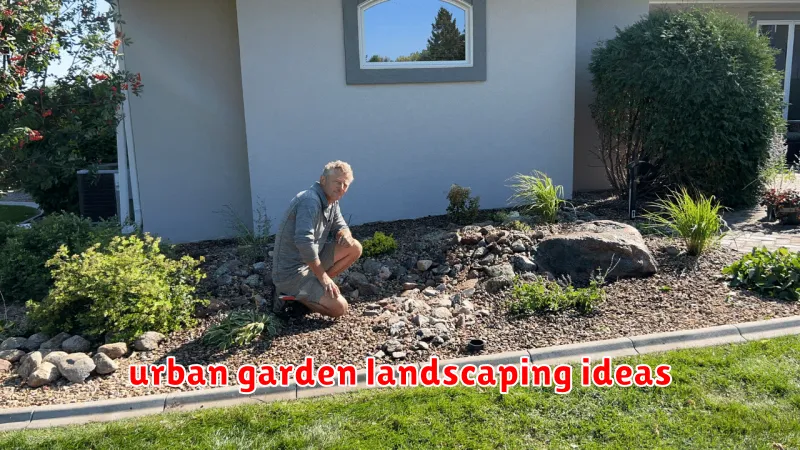Transforming even the smallest urban spaces into vibrant and functional gardens requires creative landscaping. This article explores innovative garden landscaping ideas perfect for city dwellers, focusing on maximizing limited space while incorporating sustainable and aesthetically pleasing designs. We’ll delve into practical solutions for small gardens, including vertical gardening techniques, clever space-saving layouts, and the selection of appropriate plants for urban environments. Discover how to create your own tranquil oasis amidst the city bustle with our expert landscaping advice.
Compact Vertical Gardens
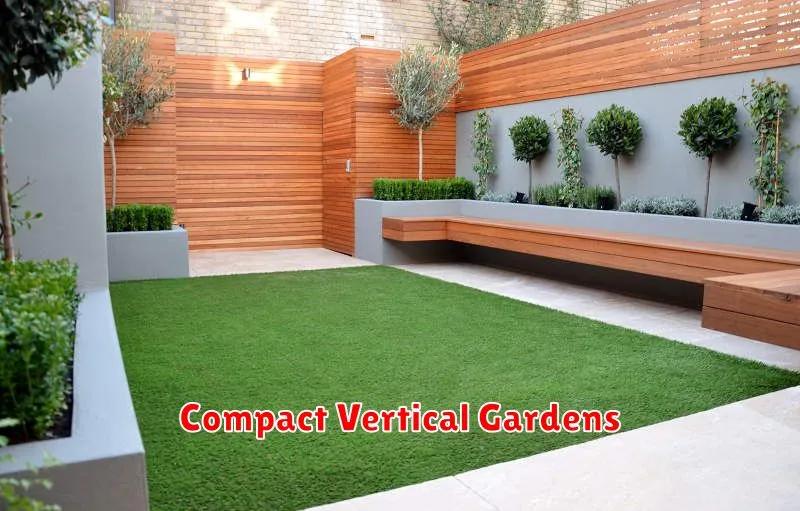
Compact vertical gardens offer a practical and aesthetically pleasing solution for maximizing space in urban environments. These gardens utilize vertical structures, such as walls or trellises, to cultivate plants upwards, thereby significantly increasing growing area within limited square footage. They are particularly beneficial for small balconies, patios, or rooftops, bringing the beauty and benefits of nature to even the most confined urban spaces.
Several design options exist for compact vertical gardens. These range from simple, DIY systems using repurposed materials like pallets or shelves, to more sophisticated, pre-fabricated units. The choice depends on individual needs and budget considerations. Regardless of the approach, selecting appropriate plants that thrive in vertical spaces, such as trailing vines or compact flowering varieties, is crucial for successful cultivation. Proper irrigation systems are also essential, especially for larger installations.
Beyond their aesthetic appeal, compact vertical gardens offer several other advantages. They improve air quality by absorbing pollutants, provide a degree of insulation to buildings, and create a more calming, natural environment. The incorporation of such gardens demonstrates a commitment to sustainable urban living and contributes to the overall well-being of both residents and the surrounding community. Furthermore, they enhance the visual appeal of buildings and spaces, creating unique and attractive features within urban landscapes.
Solar Pathway Lights

Solar pathway lights offer a practical and aesthetically pleasing solution for illuminating urban garden pathways. Their low-maintenance design eliminates the need for wiring and electrical connections, making them ideal for smaller spaces where traditional lighting might be impractical or costly. The soft, ambient light they provide enhances safety and creates a welcoming atmosphere.
Choosing the right solar pathway lights involves considering factors such as brightness, style, and battery life. Look for lights with high-lumen output for adequate illumination, and select a design that complements the overall garden aesthetic. Longer battery life ensures consistent illumination throughout the night, even on cloudy days. Durability is also crucial, ensuring the lights can withstand various weather conditions.
Proper placement of solar pathway lights is key to maximizing their effectiveness. Ensure the lights receive ample sunlight during the day to adequately charge their batteries. Strategically positioning them along pathways ensures safe and convenient navigation, while also highlighting attractive features within the garden. Consider using different light intensities and styles to create depth and visual interest within the space.
DIY Raised Beds
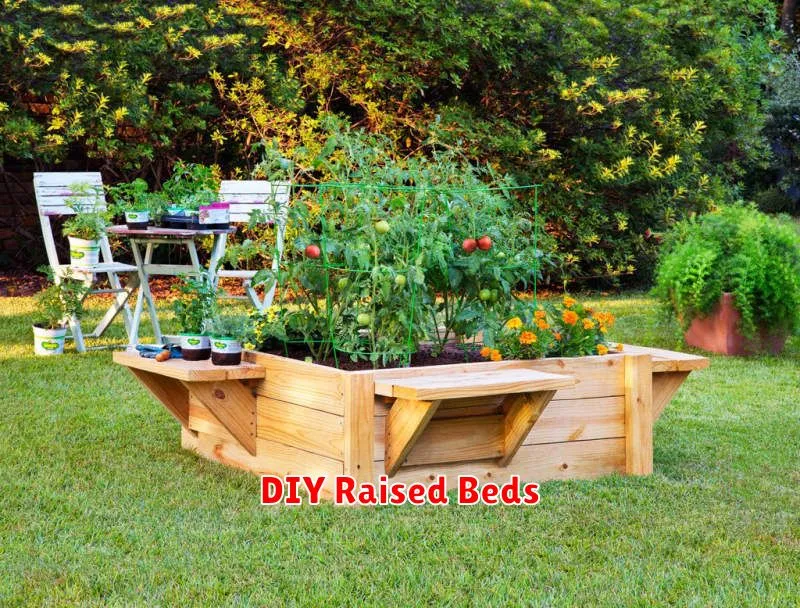
Creating DIY raised beds offers a practical and aesthetically pleasing solution for urban gardening. These structures maximize limited space, allowing for vertical gardening and efficient use of available area. The construction process can be tailored to individual needs and preferences, utilizing readily available materials like reclaimed wood, stone, or even repurposed containers.
Benefits extend beyond space optimization. Raised beds improve soil drainage and aeration, crucial factors for healthy plant growth, particularly in compacted urban soil. They also offer ease of access, eliminating the need for bending or kneeling, making gardening more comfortable. The elevated height also helps deter pests and reduces weed growth.
The design possibilities are numerous. Rectangular beds provide structured organization, while curved or free-form designs offer a more artistic touch. Adding depth provides ample room for root development. Consider incorporating features like integrated irrigation systems or built-in seating to enhance both functionality and visual appeal.
Decorative Pebble Borders
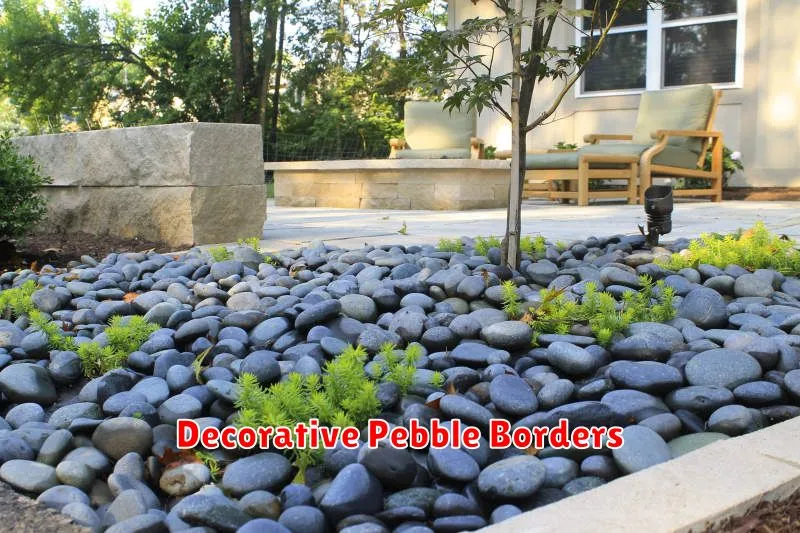
Decorative pebble borders offer a versatile and visually appealing solution for defining garden spaces in urban environments. Their low maintenance nature makes them ideal for busy lifestyles, while the diverse range of colors and textures available allows for customization to complement any design aesthetic. Consider using contrasting pebble colors to create a striking border or employing a single shade for a more subtle effect.
The installation process is relatively straightforward. Begin by preparing the ground, ensuring a level and weed-free surface. Then, install a landscape fabric to prevent weed growth before adding the pebbles. This fabric helps create a clean, finished look and reduces the likelihood of weeds sprouting through the pebbles.
Beyond their aesthetic value, pebble borders offer practical benefits. They can help retain soil moisture, reduce erosion, and suppress weeds, contributing to a healthier and more sustainable garden. The varied sizes and shapes of pebbles provide textural interest, adding depth and visual richness to your urban oasis. Ultimately, a pebble border provides a beautiful and functional enhancement to any urban garden design.
Portable Plant Stands
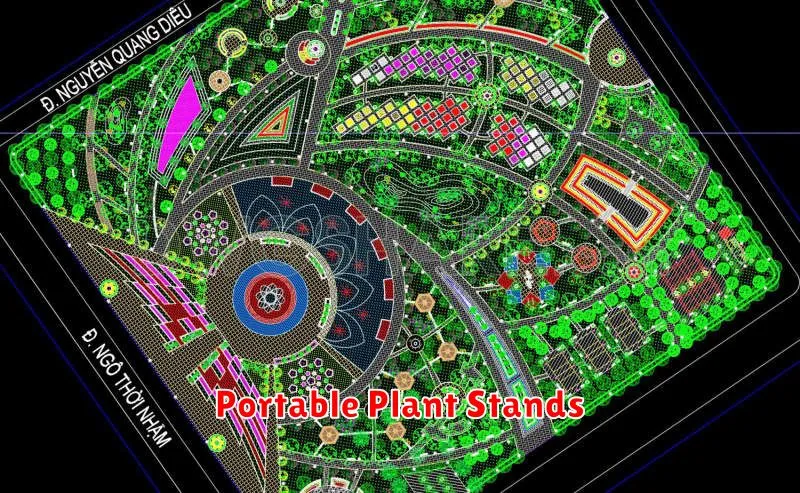
Portable plant stands offer a versatile solution for incorporating greenery into urban spaces. Their mobility allows for easy rearrangement to optimize sunlight exposure and adjust to changing aesthetics. This adaptability is particularly beneficial in smaller areas where maximizing space is crucial.
The selection of portable plant stands ranges widely in materials, styles, and sizes. Options include lightweight plastic or metal stands for easy portability, as well as more substantial wooden or wrought iron designs for a more permanent feel. Consider the weight of your plants and the overall design of your urban garden when choosing a stand.
Beyond practicality, portable plant stands enhance the visual appeal of urban gardens. They elevate plants, creating visual interest and drawing attention to specific specimens. The variety of materials and designs allows for customization to match existing decor, creating a cohesive and aesthetically pleasing outdoor space.
Eco-Friendly Garden Walls
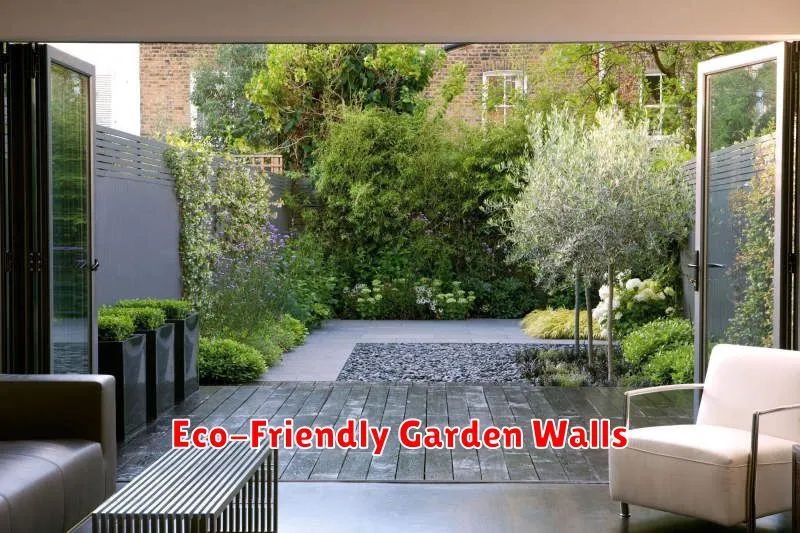
Incorporating eco-friendly garden walls is a crucial aspect of sustainable urban landscaping. These walls offer numerous benefits, including improved air quality, reduced noise pollution, and enhanced biodiversity. Materials like reclaimed wood, recycled brick, and living walls contribute to a greener, more environmentally conscious design.
Living walls, in particular, are a highly effective method for creating an eco-friendly garden wall. They utilize vertical planting systems, often incorporating a range of native plants to attract pollinators and support local ecosystems. This approach not only beautifies the space but also contributes to carbon sequestration and improved urban microclimates.
When selecting materials for eco-friendly garden walls, consider their lifecycle impact. Opt for locally sourced materials to minimize transportation emissions, and prioritize materials with minimal embodied energy – the energy used in the extraction, manufacturing, and transportation of materials. Proper installation and maintenance are also essential to ensuring the long-term sustainability of your eco-friendly garden wall.
Rainwater Harvesting Ideas
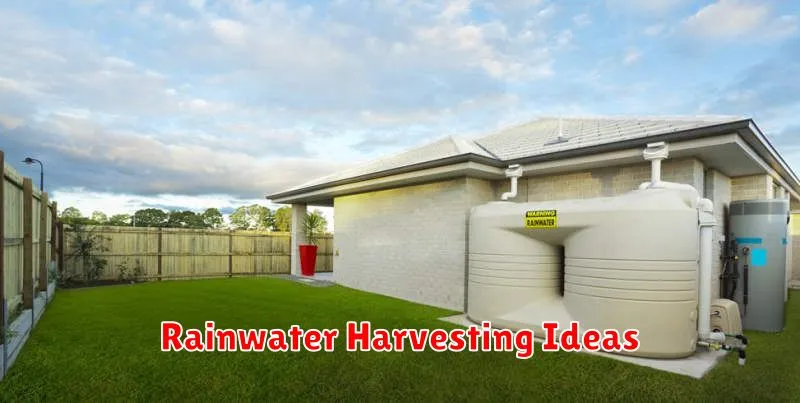
Rainwater harvesting offers a sustainable solution for urban gardening, reducing reliance on municipal water supplies. Simple systems can be implemented, such as installing rain barrels to collect water from downspouts. This collected water can then be used for irrigation, significantly lowering water bills and conserving precious resources. Consider the size of your garden and rainfall patterns when determining the appropriate barrel size and number.
For larger gardens or more ambitious projects, a more comprehensive system may be necessary. This could involve constructing an underground cistern to store larger volumes of water. Proper filtration is crucial to remove debris and ensure the water is suitable for plants. Gravel filtration and the addition of a simple first-flush diverter can prevent sediment from entering the storage tank. Consult with a professional to design a system appropriate for your specific needs and local regulations.
Beyond barrels and cisterns, consider integrating rain gardens into your landscape design. These are depressed areas planted with water-loving vegetation that naturally collect and filter rainwater runoff. This method not only provides a source of irrigation but also enhances the aesthetic appeal of your garden while mitigating the impacts of stormwater runoff. Choosing native, drought-tolerant plants further enhances the sustainability and resilience of your rainwater harvesting system.
Herb Spiral Gardens
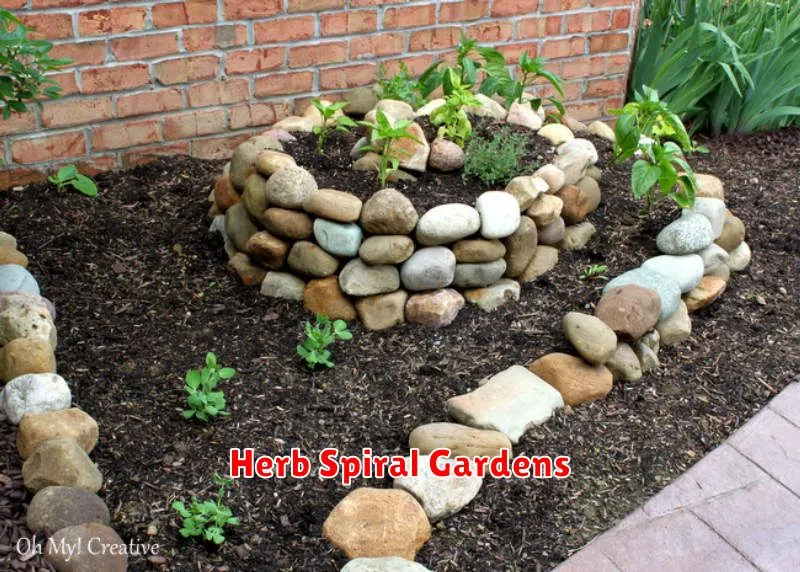
Herb spiral gardens offer a space-saving and aesthetically pleasing solution for urban gardening. Their unique spiral design maximizes planting space within a relatively small footprint, making them ideal for balconies, patios, or even small yards. The design also allows for optimal sun exposure and drainage, as herbs with varying sun requirements can be planted at different levels.
Construction is relatively straightforward, often involving a circular base of stacked stones or bricks, creating a gradual incline upwards. This vertical layering allows for efficient use of vertical space and improves air circulation, which is beneficial for many herbs. Different herbs can be grouped together according to their sun and water needs, promoting healthy growth.
Maintaining a herb spiral is relatively low-maintenance. Regular watering, weeding, and occasional pruning will ensure a thriving herb garden. The compact design also makes harvesting easy and convenient, providing fresh herbs readily available for culinary use throughout the growing season.
Recycled Tire Planters
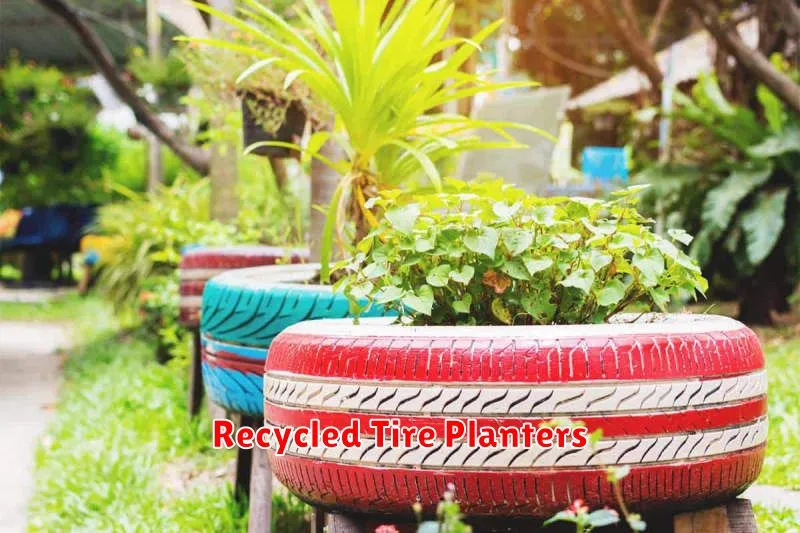
Recycled tire planters offer a unique and sustainable landscaping solution for urban spaces. They provide a cost-effective alternative to traditional planters, utilizing readily available materials to create attractive and functional garden features. The tires’ durability ensures longevity, and their varied sizes accommodate a range of plants and gardening styles.
Transforming old tires into planters involves minimal effort. Simple cleaning and painting can personalize the tires, allowing for aesthetic integration with existing urban landscaping designs. The tires can be stacked vertically to create multi-tiered displays or arranged horizontally to form unique garden beds. Adding soil and planting directly into the tires creates instant vertical gardens, maximizing space in smaller urban plots.
Beyond their aesthetic appeal and practicality, recycled tire planters contribute to environmental sustainability by diverting waste from landfills. This eco-conscious approach aligns with the growing trend towards environmentally responsible urban landscaping practices, fostering a greener and more sustainable urban environment.
Small Water Features
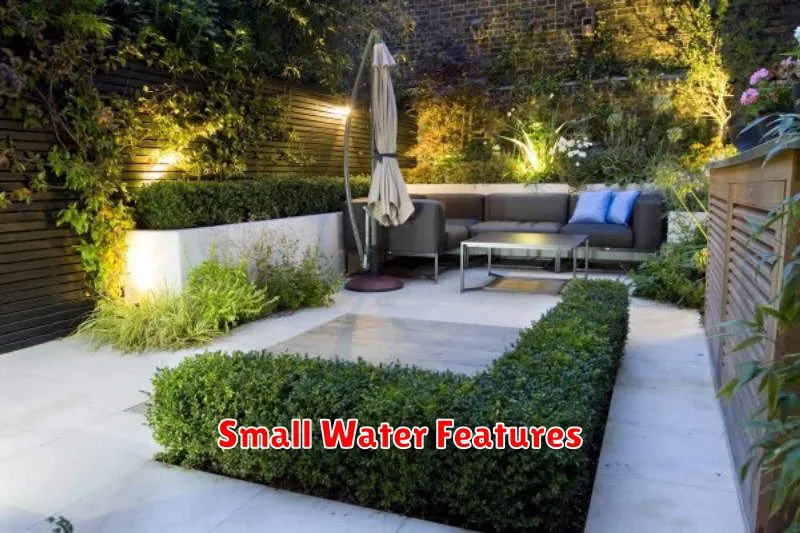
Incorporating small water features is a highly effective way to enhance the aesthetic appeal and tranquility of an urban garden. Even a small space can accommodate a variety of options, from a simple birdbath or a miniature fountain to a more elaborate pondless waterfall. The gentle sound of running water adds a calming element, masking city noise and creating a serene atmosphere.
Consider the size and style of your garden when choosing a water feature. A small, sleek fountain might be ideal for a modern, minimalist design, whereas a more rustic birdbath could complement a traditional or cottage-style garden. Maintenance requirements should also be a key factor; some features require more upkeep than others.
Remember to prioritize sustainability. Choose features that use water efficiently and consider incorporating water-wise plants around the feature to minimize water evaporation. Proper planning and installation are crucial to ensure the longevity and effectiveness of your chosen water feature, contributing to a beautiful and peaceful urban oasis.

